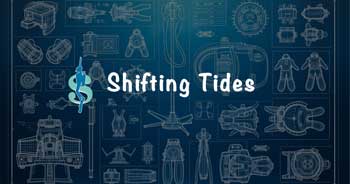Beneath the Blue Planet – A Bible for Dive Professionals
The “Diver’s Guide to the Ocean and Its Conservation” is a must-have reference book for divemasters, scuba instructors, dive boat captains, and dive center & resort managers.
Beneath the Blue Planet by Dr. Alex Brylske is subtitled “A Diver’s Guide to the Ocean.” Well, I have news for you! It’s a whole lot more than that. It’s a must-have bible for divemasters, scuba instructors, dive center and resort managers, dive boat captains, and every scuba diving and snorkeling industry professional.
In a post about The Critical Difference Between Satisfied and Enthusiastic Scuba Divers, Dr. Brylske explained that today’s dive consumers want more than to be kept safe and entertained. They want authentic and meaningful experiences that stimulate them both intellectually and spiritually. Since we introduce them to the underwater world and show them around, it’s critical for customer satisfaction that we understand the underwater world.
And that’s where Alex’s book is nothing short of a bible for us dive professionals.
This post is part of our Shifting Tides: Dive Industry Assessment & Strategies for Today’s Scuba Divers series by the Business of Diving Institute and Darcy Kieran, author of:
Contents on This Page
Beneath the Blue Planet comprehensively explores the multifaceted relationship between humans and marine environments, spanning the geological origins of the ocean and atmosphere to the impacts of modern activities like diving and tourism.
Dr. Brylske examines the chemical and physical dynamics of the ocean, the intricate workings of marine ecosystems like coral reefs, and the biology and conservation of charismatic megafauna such as sharks. He also addresses the ethical considerations of wildlife interaction, the principles of responsible diving practices, and the crucial role of education and professional conduct in safeguarding ocean health for the future.
For several reasons, the information in Dr. Alex Brylske’s Beneath the Blue Planet: A Diver’s Guide to the Ocean and its Conservation is particularly valuable for scuba diving instructors and divemasters.
As Dr. Brylske himself notes, as dive professionals, we have a powerful and unique opportunity to influence the attitude and behavior of our students and the tourists we supervise. This offers an unparalleled opportunity to instill a vital conservation ethic.
The book directly addresses this role and provides numerous insights and practical guidance. Let’s look at some of it.
Guidance on Dive Professional Responsibilities & Practices
- Chapter 14, “The Responsible Professional,” is entirely dedicated to this topic, outlining how dive professionals can best manage and supervise divers and snorkelers to reduce damaging impacts on coral reefs. It emphasizes the value of in-water supervision and the need to intervene immediately when improper behavior is observed.
- The chapter discusses strategies for preventing and defusing uncomfortable confrontations with irresponsible divers. These strategies involve establishing clear expectations and consequences beforehand, similar to the legal concept of “informed consent.” The Green Fins Programme’s sample responsible diving agreement is provided as an example.
- Dr. Brylske advises using positive language and possessive terms to increase a sense of connection to the marine environment among divers. Giving names to marine animals is also suggested to foster a sense of ownership.
- The book stresses the importance of effectively managing group sizes and giving extra attention to divers with poor buoyancy skills. It also recommends selecting dive sites appropriate for the group’s skill level.
- Special attention should be given to underwater photographers to remind them that taking photos doesn’t excuse bad behavior. Extra vigilance is also needed during night dives, and training dives where students might be distracted.
- A crucial message is to “practice what you preach” and lead by example, as divers tend to emulate their guides’ behavior.
Enhancing Scuba Educational Capabilities and Conservation Messaging
- Dr. Brylske highlights the role of dive professionals as environmental advocates and educators, emphasizing that passion is more important than encyclopedic knowledge in communicating conservation messages effectively. However, you still need to know what you are talking about.
- The book provides insights into creating a compelling interpretive message that connects with divers‘ personal experiences, encourages reflection, and fosters a desire to care for the marine environment.
- It emphasizes the importance of recognizing and leveraging “teachable moments” to convey conservation information in an engaging and impactful way.
- The book points out the “failure to connect” divers with the environment in traditional Divemaster and Scuba Instructor training. It introduces the ECO PRO program as a model for training a new generation of environmentally conscious dive professionals.
- A sidebar covers international standards for sustainable tourism, such as ISO 21416 and ISO 21417. These standards provide a framework for environmentally sustainable practices and training on environmental awareness in recreational diving. Dive professionals should be aware of these standards to improve their practices.
Improving Diver Skills and Reducing Environmental Impact
- Alex discusses new approaches to buoyancy control training, advocating for teaching neutral buoyancy from the start and avoiding overweighting students. Mastering buoyancy control is crucial for reducing diver contact with fragile marine habitats.
- The book emphasizes that open-water scuba training dives should not take place on fragile, hard coral-dominated reefs but on sites with sand, rock, soft corals, or artificial reefs,
Addressing Specific Environmental Concerns Relevant to Scuba Diving Activities
- Chapter 12, “Responsible Diving,” details the impact of scuba divers on coral reef ecosystems and provides “best practice” guidelines to reduce diver damage. This information is essential for dive professionals to effectively educate their clients and supervise dives.
- The concept of carrying capacity for dive sites is introduced, highlighting the need for management and monitoring, which dive professionals should be aware of to support sustainable tourism practices.
- The chapter underscores the key role of pre-dive briefings in reducing diver impact. It emphasizes they should be thorough and explain the ecological importance of reefs, their fragility, and specific low-impact diving methods. The Green Fins Environmental Briefing Guidelines are presented as an example.
- The impact of underwater photographers on reefs is highlighted, and guidelines for responsible underwater photography are mentioned.
- Guidance on responsible interaction with marine life, including the ethical considerations of fish feeding and shark encounters, is crucial for dive professionals leading these activities.
- Chapter 13, “Responsible Wreck Diving,” discusses the importance of preserving submerged cultural resources and provides guidelines for culturally responsible diving. It also addresses the environmental concerns associated with wreck diving.
In Short
By drawing on the information in Beneath the Blue Planet, scuba diving instructors, divemasters, and other dive industry professionals who interact with customers can significantly enhance their ability to educate divers about the marine environment, promote responsible diving practices, contribute to the conservation of the underwater world, and provide more satisfying scuba and snorkeling experiences.
The book provides both the scientific background and practical strategies necessary to fulfill our crucial role in ocean stewardship.
You may also be interested in the following podcast episode about Dr. Alex Brylske’s reference book, Beneath the Blue Planet: A Diver’s Guide to the Ocean and Its Conservation.
Continue reading about Shifting Tides: Dive Industry Assessment & Strategies for Today’s Scuba Divers.
If you found the information on this page valuable, would you consider buying me a coffee?
Either way, let’s work together on “raising the bar” in the dive industry to satisfy today’s consumers!
Your Dive Industry Compass
Scuba Diving Market Research, Surveys, Reports & Statistics
Shifting Tides
Strategies for Today’s Scuba Divers
Living The Scuba Dream
Plan Your Scuba Instructor Career & Deep Dive the Plan
You may also be interested in The Immersion Zone (our podcast), Scubanomics (our newsletter for dive professionals), and our published books & reference guides.





